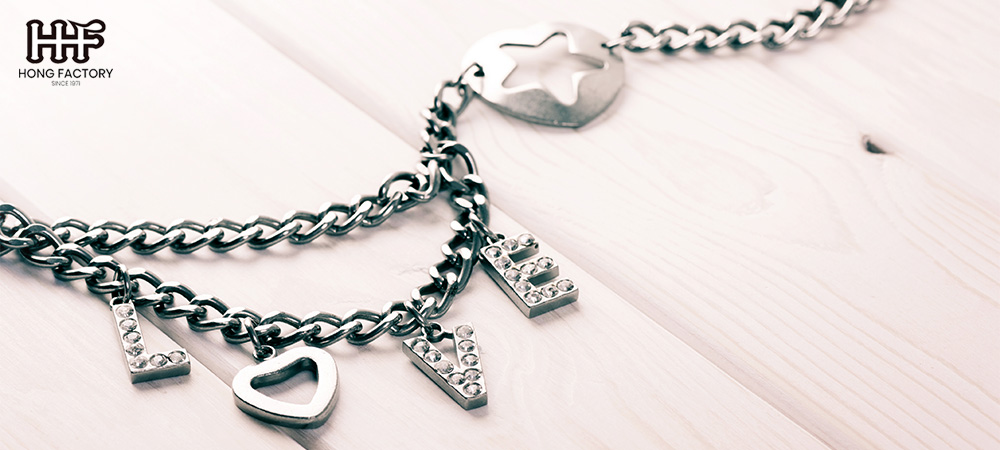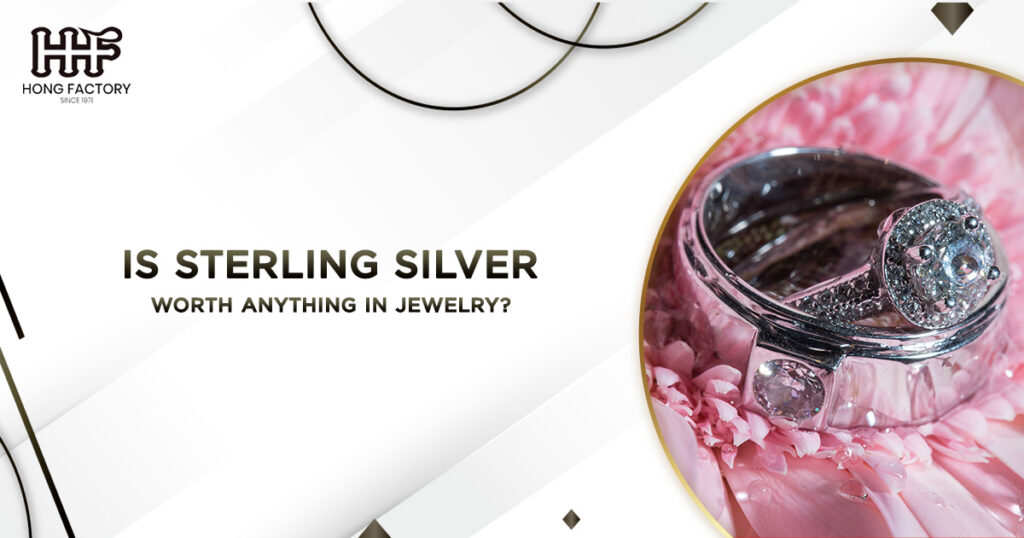Sterling silver has long been a cherished material in the world of jewelry. Its blend of beauty, durability, and affordability makes it a popular choice for both designers and consumers. But is sterling silver worth anything in jewelry? This article delves into the value of sterling silver, exploring its composition, market value, and factors that influence its worth.
What is Sterling Silver?
Sterling silver is an alloy composed of 92.5% pure silver and 7.5% other metals, typically copper. This combination enhances the strength and durability of the silver, making it suitable for crafting intricate and long-lasting jewelry pieces. The hallmark “925” is often stamped on sterling silver items to indicate their purity.
Sterling silver has been used for centuries in various cultures for its aesthetic and practical qualities. From ancient Anatolia to modern-day jewelry, sterling silver has maintained its status as a valuable and versatile material. Its historical significance adds to its allure and value in the contemporary market.

Factors Influencing the Value of Sterling Silver Jewelry
- Purity and Weight
The primary factor determining the value of sterling silver jewelry is its purity and weight. Since sterling silver is 92.5% pure silver, its value is closely tied to the current market price of silver. The weight of the item also plays a crucial role; heavier pieces contain more silver and are therefore more valuable.
- Design and Craftsmanship
The design and craftsmanship of sterling silver jewelry can significantly impact its value. Intricately designed pieces or those crafted by renowned silversmiths often fetch higher prices due to the skill and effort involved in their creation. Brands like Tiffany & Co. and Mario Buccellati are known for their high-quality sterling silver pieces, which can command premium prices.
- Hallmarks and Authenticity
Hallmarks are stamps that indicate the authenticity and origin of sterling silver items. A “925” stamp is a common hallmark for sterling silver, but other marks can denote the country of origin, the year of manufacture, and the maker’s mark. Authentic hallmarks can enhance the value of sterling silver jewelry, as they provide assurance of its quality and provenance.
- Rarity and Age
Antique or vintage sterling silver items can be more valuable due to their rarity and historical significance. Well-preserved pieces from specific time periods or those associated with notable events can attract collectors and fetch higher prices. The age and condition of the item are crucial factors in determining its worth.
- Market Demand
The demand for sterling silver jewelry fluctuates with fashion trends and economic conditions. Certain styles or categories of sterling silver items, such as flatware or jewelry with specific patterns, may be more sought after and therefore more valuable. Market demand can significantly influence the price of sterling silver jewelry.
- Selling Methods
The method chosen to sell sterling silver jewelry can also impact its value. Selling to collectors, antique shops, or through online marketplaces can lead to different offers. Private auctions or auction houses may yield higher prices for exceptional pieces, while pawnshops and antique stores might offer lower prices but quicker sales.
Calculating the Value of Sterling Silver Jewelry
To determine the value of sterling silver jewelry, follow these steps:
- Weigh the Item: Use a scale to measure the weight of the jewelry in grams or ounces.
- Check the Current Silver Price: Look up the current spot price of silver, which fluctuates based on market conditions.
- Calculate the Silver Content: Multiply the weight of the item by 0.925 to find the amount of pure silver it contains.
- Determine the Value: Multiply the amount of pure silver by the current spot price to estimate the value of the sterling silver jewelry.
For example, if you have a 1-ounce piece of sterling silver jewelry and the current spot price of silver is $22.76 per ounce, the calculation would be:0.925×22.76=21.030.925×22.76=21.03Thus, the value of the 1-ounce piece of sterling silver jewelry would be approximately $21.03.
The Investment Potential of Sterling Silver Jewelry
Sterling silver jewelry is not only beautiful but also a worthwhile investment. As a precious metal, silver is a finite resource, and its value tends to increase over time. Investing in high-quality sterling silver jewelry can be a smart financial decision, especially if the pieces are well-crafted and maintained.
how does the durability of sterling silver compare to gold and platinum
The durability of sterling silver compared to gold and platinum varies significantly due to the intrinsic properties of each metal and their common uses in jewelry. Here are the key points based on the provided sources:

Sterling Silver
Composition and Durability : Sterling silver is an alloy containing 92.5% pure silver and 7.5% other metals, usually copper. This composition makes it more durable than pure silver but still softer and more prone to scratching and bending compared to gold and platinum.
Tarnishing: Sterling silver is susceptible to tarnishing when exposed to air and moisture. The copper content in sterling silver can accelerate this process, although modern alloys can reduce tarnishing.
Care and Maintenance : Sterling silver requires regular cleaning and maintenance to retain its luster. Tarnish can be removed, but the metal needs more care than gold or platinum to maintain its appearance.
Gold
Composition and Durability : Gold’s durability depends on its karat rating, which indicates the proportion of gold to other metals. Higher karat gold (e.g., 18K) is softer and more prone to scratching, while lower karat gold (e.g., 14K or 10K) is harder due to the higher content of alloy metals like copper, silver, nickel, and zinc.
Tarnishing : Gold is highly resistant to tarnish and corrosion, making it more durable in terms of maintaining its appearance over time compared to sterling silver.
Care and Maintenance : Gold requires less maintenance than sterling silver. It does not tarnish, but it can still scratch and dent, especially at higher karat levels.
Platinum
Composition and Durability : Platinum is a dense and highly durable metal, often used in its nearly pure form (approximately 95% pure). It is much harder and more resistant to wear and tear than both gold and sterling silver.
Tarnishing : Platinum does not tarnish, making it the most durable of the three metals in terms of maintaining its appearance. It is also hypoallergenic, making it suitable for people with metal sensitivities.
Care and Maintenance : Platinum requires minimal maintenance. It retains its luster and does not need re-plating, unlike white gold, which may require periodic re-plating to maintain its appearance.
Conclusion
Sterling silver jewelry holds significant value due to its purity, craftsmanship, and historical significance. While the market value of silver fluctuates, the intrinsic worth of well-crafted sterling silver pieces remains high. Whether you are looking to invest in new jewelry or sell existing pieces, understanding the factors that influence the value of sterling silver can help you make informed decisions.
Sterling silver is indeed worth something in jewelry. Its blend of beauty, durability, and affordability makes it a timeless choice for both fashion and investment. By considering factors such as purity, design, hallmarks, rarity, market demand, and selling methods, you can maximize the value of your sterling silver jewelry.

